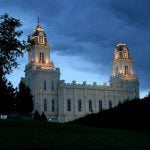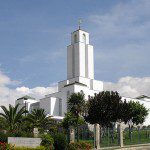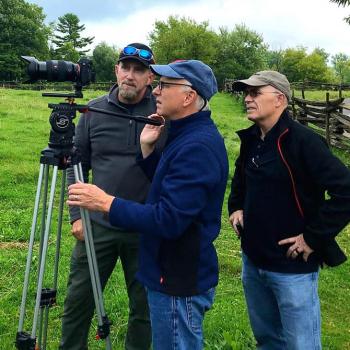
I continue with notes that I’ve extracted mostly from an article written by a longtime friend of mine, the Latter-day Saint geologist Dr. Bart Kowallis, about the natural catastrophe described in the Book of Mormon as having occurred in the New World at the death of Christ: Bart J. Kowallis, “In the Thirty and Fourth Year: A Geologist’s View of the Great Destruction in 3 Nephi,” BYU Studies 37/3 (1997-1998):
A skeptic may rightfully object that, although Professor Kowallis posits a volcanic background for the cataclysm chronicled in 3 Nephi, the text doesn’t actually mention a volcano.
Professor Kowallis argues, nonetheless, that volcanism is the best explanation. (And I point out, once again, that volcanic activity is common in Mesoamerica, which many academic students of the Book of Mormon believe to be its most likely setting.)
At the conclusion of his discussion of the lightning and thunder and stormy winds that accompanied 3 Nephi’s natural disaster, Dr. Kowallis remarks that
These features of the destruction in 3 Nephi do not alone define the event as a volcanic eruption; . . . [they] can be produced in other ways , but an explosive volcanic eruption is certainly the simplest explanation that satisfies all of the criteria. (158)
He supplies several examples of massive seismic events such as the Alaskan earthquake of 1964 (at somewhere between 8.3 and 8.6 on the Richter scale, one of the largest earthquakes ever recorded) and the 1906 San Francisco earthquake. The latter lasted about forty seconds. The former, extraordinarily, lasted an awful three to four minutes. But 3 Nephi says that the horror lasted three hours. That is, says Dr. Kowallis,
too long a time period for the shock from a single large earthquake and too short for the period during which aftershocks following a major earthquake usually take place. However, it is a very reasonable amount of time for the initial stages of a volcanic eruption. We might call this the “throat-clearing stage” of the eruption, which occurs as the mounting pressure cleans the volcano’s vent of the rock and debris that have plugged it up. During this time, frequent explosions and earthquakes occur. Once the vent is cleared, the volcano may continue to erupt for several hours or days without additional significant earthquakes. (159)
Earthquakes have never been significantly, causally, correlated with three days of darkness, or with winds and tempests, or with whirlwinds, or with the inability to light a fire. But all of those phenomena have been associated with volcanic eruptions. Nor do earthquakes thoroughly transform a landscape (as 3 Nephi says happened during the catastrophe it describes) in the way that a volcanic eruption does. And — Dr. Kowallis observes, drawing on examples like Krakatoa (1883), Raoul Island near New Zealand (1964), and Guatemala’s Santa Maria volcano (1902) — earthquakes can persist over several hours in connection with volcanic eruptions and then subside.
When the Coseguina volcano in Nicaragua erupted in 1835, it was reported that sounds accompanying the shaking were alarming and heard up to four hundred miles away and that “the roar was practically continuous for seven hours.” Even though most of the noise and shaking caused by the eruption of Coseguina ceased after a few hours, the eruption itself and the darkness caused by the ashfall continued on for three to four days. All of these accounts are quite similar to the 3 Nephi account in which the initial part of the eruption lasted for three hours with violent shaking and thunder, followed by quiet and darkness for three days. (160)












